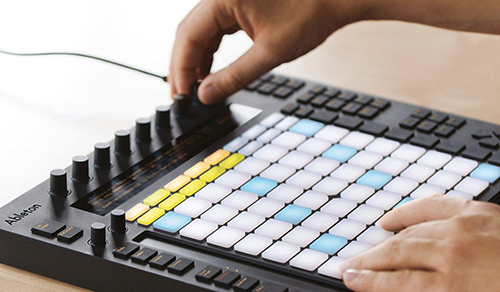
Beats are essential for songs in almost every genre of music. The very process of their creation begins with the selection of samples, continues with clever combination and mixing, and finally ends with getting the big picture. Many musicians claim that creating beats is their favorite part of working on a song. And no wonder, because the beats together with the bass form the so-called groove, that is, the basis for the song. The track should “turn on” the listener, and this cannot be achieved by a song with sloppy, low-quality beats. So read on for tips on how to create beats and use them to create truly groovy tracks that the listener will definitely want to dance to.
First of all, you should find sounds of good quality and with "character". The latter, however, is very subjective, because what at first seems great to you may not “play” in the track later. Therefore, it is worth regularly replenishing your library of sounds.
This advice follows from the previous one: keep an overview. What does it mean? The only thing is that it is worth replenishing your collection of sounds only when you have already studied the existing "arsenal" up and down and a breath of fresh air is really needed for further creativity. Also, periodically review your reserves, refresh your memory of sounds, and then it will be much easier for you to make the right choice when working on a new track. If some sound in practice was not good enough, in your opinion, delete it without pity. Excess clutters up space on your computer and your brains. The same presets that impressed you in a good way, mark with the appropriate tags. So that in the future you can easily find them.
A trick like layering will help make the sound fuller and fatter. It applies even when you are using quality sample material. Layering expands your options.
It happens that when layered, the sound becomes too soft, it does not have enough drive and impact. What to do in this case? The answer is simple: learn to mix. All tracks in your project must first be converted into a complete ensemble. Pay attention to the adjustment of the volume ratio of these tracks to each other and their panning (left/right distribution in the stereo pan of the mix).
Learning from professionals is not a shame, but commendable. Listen to the tracks of your favorite artists, analyze beats made by professionals. Try to understand what elements were used, how many sounds and cycles does a beat consist of? How were the intros and breaks arranged? How loud are the individual instruments? Finally, think about how you can implement all this variety of ideas for your own beatmaking.
Routine is the real enemy of creativity. If you're constantly making beats in large numbers, you can get trapped in your own fruitful creativity. Analyze your work. If the same drum and snare drum are set to the same
the same samples, similar effects and instruments are selected, then it's time to take a break and start getting creative. Take other sounds, start on a different track - throw yourself off track.
Do not reject such an option as recycling. It is likely that you have bits somewhere that seemed unusable to you, but your hand did not rise just to remove them. That's good, let them lie down. After a while, return to your deposits and listen to all the beats with a certain amount of criticism. So you can understand what really needs to be removed, and what else can be salvaged with some refinement. But the main thing is that this process can lead you to new, fresh ideas. And this is just what you need.
